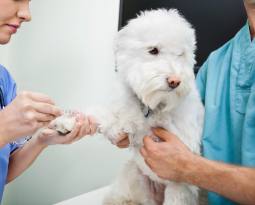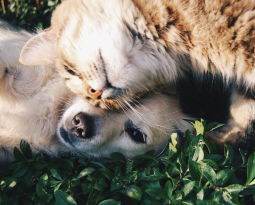The wildlife of the Sonoran Desert aren’t the only animals out there in the community. Community animals like cats are common in many neighborhoods across the country. Pet lovers see all of these cats in their neighborhood and their hearts cry out, “How can I help?!” We know. We’ve been there before. This time on the Acoma Animal Clinic blog we’re going to offer some help and pointers on helping community cats.
Helping Community Cats – A Worthy Cause
Once upon a time, all cats were ‘community’ cats. Unlike dogs, cats allowed themselves to be domesticated when they realized there was a ready supply of food in human communities thanks to rodents that congregated around grain storage. Those cats just hung about, a lot like modern-day raccoons and birds, animals that are in the area but nobody owns them. In some neighborhoods that lifestyle is still present. The first step to understanding how you can help community cats is understanding the problems associated with them.
Understanding Problems Associated with Outdoor Cats
Outdoor cats have problems of their own but they also create a challenge for the areas they are in, especially for the animal welfare systems of the community. Animal shelters typically have to euthanize feral cats as they are not adoptable. And if a shelter doesn’t have the resources they need to socialize and help feral kittens, with no community support those kittens will have to be euthanized too. Sometimes it’s just the huge number of kittens and cats and lack of resources that cause even tame animals to be euthanized.
Shelters in communities with large populations of un-sterilized cats may face:
- A higher number of cats being brought in, because of kittens and adult captures
- Higher rates of euthanasia because of limited space, lack of adoptability
- Tighter financial problems, due to caring for and euthanasia costs
- Complaints about outdoor cats, for a number of reasons
There’s also concerns of safety when community cats aren’t managed. Feral cats are tied to their territory closely, it’s where they were born have spent their entire lives. Relocating those cats is an uphill battle as they will frequently disappear from where they were released to find their original homes.
Helping Community Cats – Getting them Spayed/Neutered or Homed
When it comes to helping community cats, there is more that you can do to help the animal than just feeding them. If a cat is tame, take steps to find out if the cat had an original owner. Report the cat to an agency in your community that handles care and control in case an owner is desperately searching for them without much luck. If there isn’t any owner to be found then steps can be taken to help get the animal into a permanent, safe living situation.
If the cats are feral then it is crucial that they are spayed or neutered to improve their quality of life as well as stop further reproduction and community growth. Cats can reproduce fast. If you don’t act quickly, the couple of outdoor cats you’ve been feeding can turn into a dozen, and by the end of the year, that number can quickly leave you overwhelmed.
Find out about your communities available resources such as Trap-Neuter-Return programs that work to keep feral cat populations down.
Once you’re sure your community cats have all been neutered you can take on the ongoing task of feeding them, providing them basic outdoor shelter, and if they’re tame getting them into new homes. Doing that and you’ll be giving these cats a whole new lease on life! They probably won’t thank you, but they’re cats, you know how they can be!







